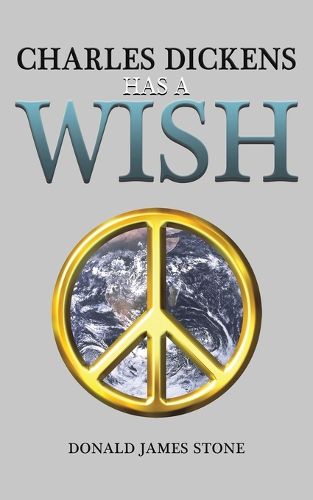Readings Newsletter
Become a Readings Member to make your shopping experience even easier.
Sign in or sign up for free!
You’re not far away from qualifying for FREE standard shipping within Australia
You’ve qualified for FREE standard shipping within Australia
The cart is loading…






This title is printed to order. This book may have been self-published. If so, we cannot guarantee the quality of the content. In the main most books will have gone through the editing process however some may not. We therefore suggest that you be aware of this before ordering this book. If in doubt check either the author or publisher’s details as we are unable to accept any returns unless they are faulty. Please contact us if you have any questions.
Charles Dickens Has a Wish explores Dickens' use of 'secret writing' (inspired by Edgar Allan Poe) while composing A Tale of Two Cities. To fully understand A Tale of Two Cities, readers must solve the riddle Dickens introduces early in the novel and follow its directions. This book highlights and explains that riddle, along with other subtle clues Dickens uses to guide readers. Some of Dickens' characters even have unnamed alter egos. By following the riddle's directions, readers can uncover which characters have these hidden identities. Dickens encourages readers to experience events through the perspectives of his characters. This mirrors Plato's attempt, in the 'Allegory of the Cave' from The Republic, to have readers see the world through the eyes of the unchained captive. Both authors believed that experiencing life through another's viewpoint activates what Socrates referred to as the quality of 'Goodness.' Often called the 'third eye' in Hindu traditions, this concept may also be tied to Gnostic teachings. Could this shared vision explain why The Republic was discovered among the Nag Hammadi texts? Readers who follow Dickens' riddle may trigger this transformative experience automatically. In essence, Dickens hid a profound plan for world peace within A Tale of Two Cities. He sought to instill 'Goodness' in his readers' minds, envisioning a future where parents pass this lesson to their children for generations. His ultimate wish? Peace for all people on earth - forever.
$9.00 standard shipping within Australia
FREE standard shipping within Australia for orders over $100.00
Express & International shipping calculated at checkout
This title is printed to order. This book may have been self-published. If so, we cannot guarantee the quality of the content. In the main most books will have gone through the editing process however some may not. We therefore suggest that you be aware of this before ordering this book. If in doubt check either the author or publisher’s details as we are unable to accept any returns unless they are faulty. Please contact us if you have any questions.
Charles Dickens Has a Wish explores Dickens' use of 'secret writing' (inspired by Edgar Allan Poe) while composing A Tale of Two Cities. To fully understand A Tale of Two Cities, readers must solve the riddle Dickens introduces early in the novel and follow its directions. This book highlights and explains that riddle, along with other subtle clues Dickens uses to guide readers. Some of Dickens' characters even have unnamed alter egos. By following the riddle's directions, readers can uncover which characters have these hidden identities. Dickens encourages readers to experience events through the perspectives of his characters. This mirrors Plato's attempt, in the 'Allegory of the Cave' from The Republic, to have readers see the world through the eyes of the unchained captive. Both authors believed that experiencing life through another's viewpoint activates what Socrates referred to as the quality of 'Goodness.' Often called the 'third eye' in Hindu traditions, this concept may also be tied to Gnostic teachings. Could this shared vision explain why The Republic was discovered among the Nag Hammadi texts? Readers who follow Dickens' riddle may trigger this transformative experience automatically. In essence, Dickens hid a profound plan for world peace within A Tale of Two Cities. He sought to instill 'Goodness' in his readers' minds, envisioning a future where parents pass this lesson to their children for generations. His ultimate wish? Peace for all people on earth - forever.